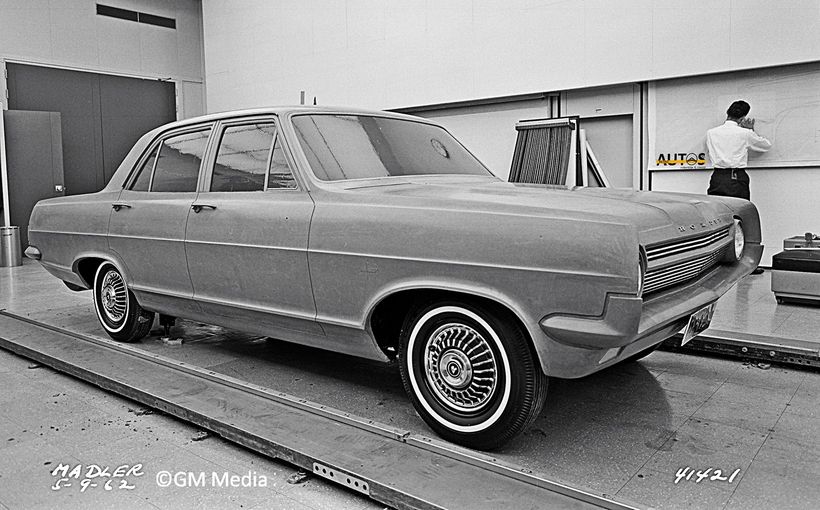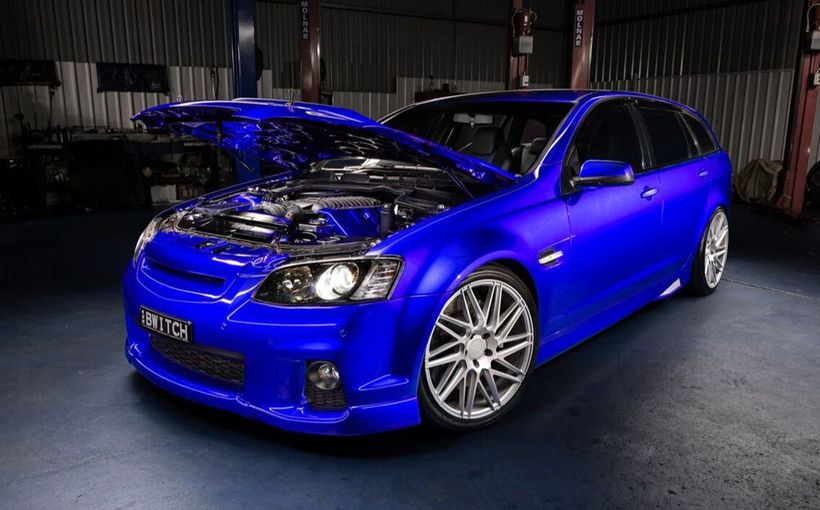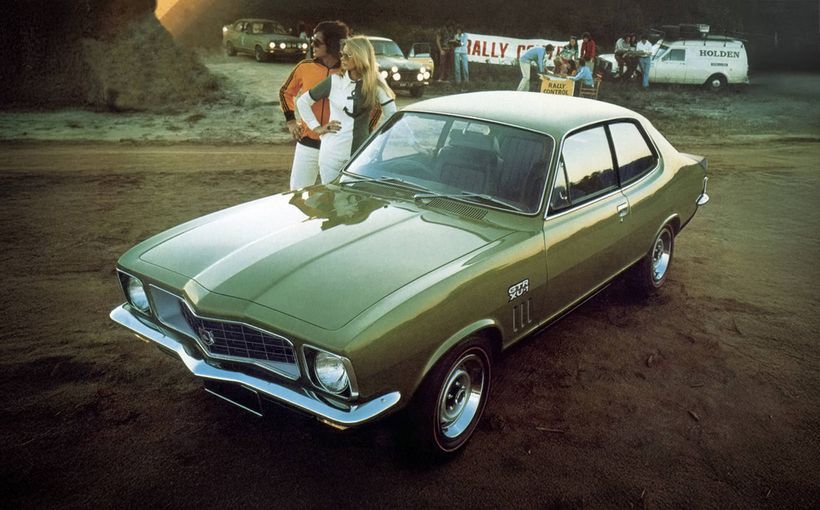Nineteen fifty-one was a year of firsts, lasts and milestones and many cars from this largely forgotten year in automotive history deserve to be recognised on their 70th anniversary. This is my selection.
Renault Fregate: Front to back.
In 1948, after the launch of the small and spartan 4CV, Renault believed it needed a more up-market and larger car to compete with Citroen’s then 13 year old Traction Avant and Peugeot’s new 203.
Their solution was the Fregate. It holds the honour of being the last front engine, rear drive automobile to be designed and built by Renault.

If you think the Fregate looks like an enlarged Dauphine, you are right. It was originally designed to be a rear engine car. That configuration proved a little hard to achieve at the time, so the change was made.
It was propelled by a two litre four-cylinder engine, linked to a three speed gearbox manipulated by a column shifter. Bench seats provided seating for six. Boasting all round independent suspension, it had excellent roadholding.
The downside was that the car’s initial poor quality gave it a reputation that hampered sales throughout its entire production run. In 1955 its sales were further impacted when Citroen released their futuristic DS Goddess and Peugeot showed off their new 403.
When production ended in 1960 Renault had sold just 177,000 Fregates. By comparison, Simca achieved that many sales of its 1951 Aronde by 1954.
On 11th February, 1955 Renault’s CEO, Pierre Lefaucheux, crashed a Fregate. He died when struck by his briefcase, which was unsecured on the back seat.
A few Fregates made it to Australia. They were RHD imports. In 1953 their price was £1636, about the same as a Ford Customline. A new FJ Holden was 35% less.
Simca Aronde: An American in Paris.
“Some Car This Simca” is the well-remembered 1960s advertising phrase in Australia. It referred to the 1958 P60 Aronde, but, like everything successful, it has been appropriated to describe Simcas of all decades.
The 1951 Aronde was the first Simca designed from the ground up. Previous models had been cleverly re-configured Fiats. That was not a surprise, because the financial, engineering and styling links between the companies went back to the mid-1930s when Fiat established Société Industrielle de Mécanique et Carrosserie Automobile: SIMCA.
There was nothing extraordinary about the Aronde. It was fuss-free and gained a reputation for appealing styling, surprising power, great handling and reliability.
The power and handling attracted the car racing fraternity and many racing activities were actively and loudly supported by Simca’s boss, Henri Pigozzi. From the Monte Carlo Rallye to the 1960 Armstrong 500 in Australia, the Aronde was a winner. I’ve included links to two great Shannon’s Club Classic Garage and Racing Garage stories about the Aronde, by Dr John Wright and Mark Oastler, at the end of this article.
I reckon the Aronde’s styling and robust reliability was the core to its worldwide appeal. It had an expensive, smartly tailored mid-Atlantic look. It was an American in Paris. By the time the re-designed P60 model appeared in 1958, Simca had sold 650,000 Arondes.
The Aronde’s success transformed Simca into France’s second largest automotive manufacturer, created a sound financial foundation and ultimately attracted the takeover by Chrysler. Despite Chrysler’s post-takeover mismanagement of its European strategy, Simca developed two very successful cars, the 1961 rear engine 1000 and 1967 front wheel drive 1100 hatchback. The 1100’s successor, the Horizon, became the basis for Chrysler’s 1981 K-Car and mini-vans, which, ironically, saved Chrysler from bankruptcy and added to Lee Iacocca’s already celebrated reputation.
If I had to summarise its legacy, then how’s this? Aronde saves Simca and Simca saves Chrysler. Some car, eh!
Ford Consul/Zephyr: Strutting its stuff.
This duo was the outcome of an abandoned small car project at General Motors (GM). Back in 1945 GM announced it was planning to market a “small” Chevrolet, the Cadet, sometime in the next couple of years. The engineer in charge of the project was Earle MacPherson.
New ideas permeated the Cadet. It had unitary construction. The front suspension was an innovative independent coil and strut system, designed by MacPherson. The independent rear suspension also used MacPherson’s struts. Brake, clutch and accelerator pedals were suspended from the firewall, rather than protruding up through the floor. A 132 cubic inch/2.2 litre six-cylinder engine provided the power.
The problem was that all this innovation cost money and the accountants calculated that the car needed to be price close to a full-sized Chevrolet to return a decent profit. So, you can see where all this is going. In May, 1947, GM announced that the project was shelved.
MacPherson did not take kindly to the announcement. Ford heard of his frustration and offered him a job as chief engineer. And off to Dearborn he went.
He convinced Ford to use the strut system in the 1948 Ford Vedette that was to be sold in France.
But it was the development of the Consul/Zephyr where MacPherson’s ideas came together in a modern automobile, including the struts and the suspended pedals.
The basic platform of the 1951 Consul/Zephyr began the global trend to MacPherson strut suspension. Quite a legacy.

Henry J: No frills and few sales.
In mid-1945 Henry Kaiser met Joseph Frazer and they agreed to build cars that would carry their names.
Kaiser was a self-made steel, aluminium, ship building, health care and construction magnate. Frazer was a well-respected automotive executive, with senior roles at GM and Chrysler and Willys-Overland on his resume. He named the “Plymouth” and trademarked “Jeep”. In 1944 he bought the Graham-Paige company and started developing a post-war car with slab sided styling.

The duo used Frazer’s company and the new car to form Kaiser-Frazer (K-F). A falling out in 1949 over the future direction of the company saw Frazer retire. With Frazer gone, Henry Kaiser was free to develop his dream of a basic, affordable car, a 1950s Model T.
An initial design proposal by one of the K-F team, which followed the lines of the forthcoming 1951 Kaiser, was rejected. Kaiser preferred a shape urged on him by Detroit-based American Metal Products (AMP). AMP made springs for car seats. They had never designed cars.
Talk about poor timing and missing the market’s needs. The Henry J was launched just at the start of a decade when longer, lower, wider, glitzier, more comfortable and more powerful was trending exponentially. By comparison the Henry J was spartan and stubby.

To keep the price low, K-F stripped the Henry J bare. No boot lid, glove box, arm rests and passenger sun visor. The rear windows were fixed as were the front quarter windows. The power came from a four-cylinder engine or an optional six.
If the styling was not enough to deter buyers, the pricing was of minimal help. The similar sized and much better equipped Nash Rambler and Willys Aero and full-sized base models from Chevrolet, Plymouth and Ford were priced just 7-10% more than a bare bones six-cylinder Henry J. A second-hand Ford or Chevrolet was half its price. Car buyers knew the difference between stylish value-for-money and ugly-cheap. Production ended in 1953, with only 120,000 built.

There’s an Australian link to the Henry J. It was Duncan McRae who shaped the in-house proposal. Its rejection led to his resignation. He subsequently worked at Ford and Studebaker and then established his own design company. He returned to Ford in 1964 and in mid-1969 was appointed design director of Ford Australia, replacing Jack Telnack.

Ford’s first hardtop: Crowning Victoria.
The 1951 Victoria hardtop was the first of its body type for Ford. It was styled in a very short time by Gordon-Buehrig, who was in charge of creating station wagons and convertibles from Ford’s basic sedan.
Yep, that Gordon Buehrig, the renowned designer of the ground breaking 810/812 Cord and iconic Auburns and Duesenbergs of the 1930s.

In a 1989 interview at the Benson Ford Research Centre, at the Henry Ford museum, Buehrig shared his memories of styling the hardtop.
“General Motors were building a car called a hardtop. They were very popular. The sales department was very unhappy that Ford didn't have a model like that because General Motors were making lots of money on it. The dealers were really screaming. So, John Oswald (then head of Ford’s body engineering and styling department) came in one day and said, ‘Can you take a convertible and make it into a hardtop?’ Well, of course, we already had the windows for the door and the quarter window (for the convertible), so it's just a matter of doing the new top for it. We did it with a band of corrugated metal up over the rear window which gave it a styling distinction.”
And right there you have the genesis of the “crown of chrome” design motif which was still being used by Ford fifty years later.
The Victoria hardtop, with its standard V8 went to 110,000 buyers, beating Chevrolet’s Bel Air Sports hardtop. You may not be able to afford a Beuhrig designed Cord, Auburn or Duesenberg, but if you can get your hands on a 1951 Ford Victoria hardtop, you will have a Buehrig styled classic.

Toyota Land Cruiser and Nissan Patrol: Success starts here.
Both of these storied brands first appeared in 1951. Mark Oastler has written extensively about them and the links to these Shannons Club articles can be found at the end of this story.
La Sabre and XP300: The stuff that dreams are made of.
You can mark the start of the great American dream car era from when GM revealed the Buick XP 300 and La Sabre in the first months of 1951.
The two cars were automotive shock and awe. They were GM’s visual message to its competitors that it had defined the shape of the future and everyone might as well just fall in line and follow.
Designed in tandem during 1949 and 1950, the cars were crammed with wonderous technical innovations. Both were powered a supercharged, 215.7 cubic inch/ 3.5 litre, mostly aluminium V8 that delivered a stunning 335bhp. The engine was fed a mixture of methanol and avgas from separate carburettors and tanks. Body panels were magnesium and aluminium. Hydraulic jacks raised and lowered the cars should a tyre need changing. Power brakes, power steering and power windows, which were still ultra-rare items in 1951, were on both cars.
The La Sabre had a moisture sensor that automatically closed the convertible top and raised the windows if rain was detected. Its digital speedo was a revelation for the times.
Standing a mere 50 inches/1270mm tall, the La Sabre rolled on 13 inch/ 330mm wheels. The XP300 was slightly higher because it used 15 inch/381mm wheels. Both featured a wraparound windscreen, which GM’s glass supplier had only just perfected after four years of arduous trial and error.
The cars were the star attractions at auto shows across the USA. When not doing show duty the La Sabre was the personal transport of GM’s design boss, Harley Earl. Buick’s chief engineer, Charles Chayne, used the XP 300.
The La Sabre is now kept at GM’s Heritage Centre in Sterling Heights, Michigan. The XP 300 is at the Alfred P Sloan Museum in Flint, Michigan. You can see the La Sabre in a 2017 episode of Fletch’s Classic Restos. There is a link at the end of this story.
Holden ute: Built in Australia to build Australia.
On January 1st, 1951, the 50th anniversary of Australia becoming a Federation was celebrated. Our population was 8,421,775, half the country still lived outside of the capital cities and Robert Menzies was Prime Minister.
A few days after the Federation festivities had concluded Holden unveiled its coupe utility, model designation 50-2106.
Although Ford may have invented the ute, it was Holden that provided it in a package which was just the right size and at an affordable price.
Derived from the 48-215 Holden sedan, the 50-2106 utility signalled to competitors that Holden now had the capacity to sell multiple models. The ute offered a robust and reasonably powerful workhorse for those on the land and for those plying a trade. It is a car which was built in Australia and helped build Australia.
Six months after the ute was released, former Prime Minister, Ben Chifley, who had stood beside the 48-215 at its release in November 1948 and proudly proclaimed “It’s a beauty”, died.
Vehicles such as the 48-215 and 50-2106 will never be designed and manufactured in Australia again. And we are the poorer for that.
Retroautos is written and published by David Burrell with passion and with pride.
Here are the links mentioned in the story.
Mark Oaster Nissan Patrol LINK
Mark Oastler Toyota Land Cruiser LINK
Dr John Wright Simca Aronde Classic Garage LINK
Mark Oastler Simca Aronde Racing Garage LINK
Fletch’s Classic Restos La Sabre LINK































